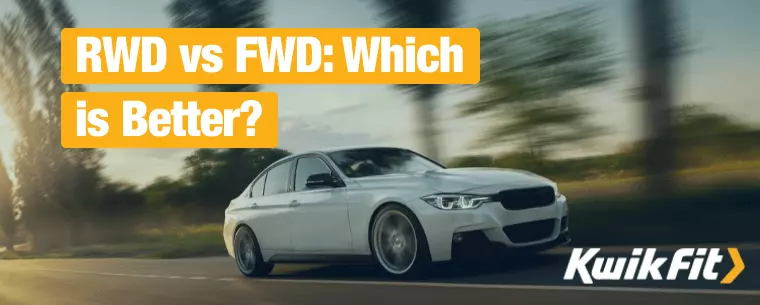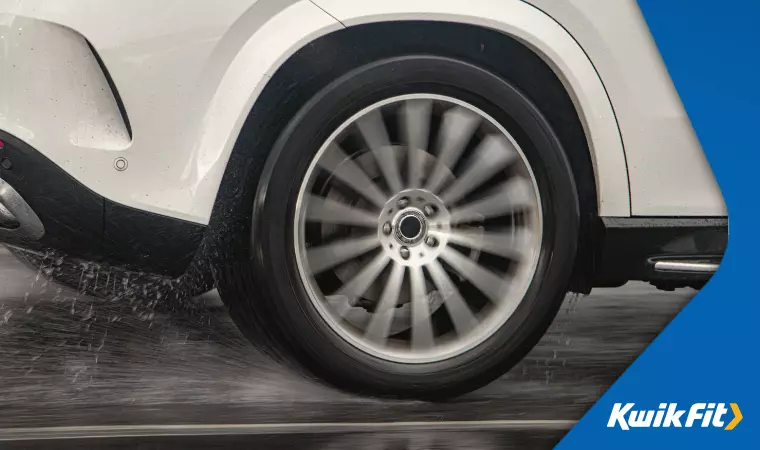RWD vs FWD: Which is Better?
Jack Dreyer | Thursday 19th January 2023 5:30pm

Did you know that the steam car designed by Nicholas Joseph Cugnot back in 1769, which effectively paved the way for all automobiles that followed, was front-wheel drive?
Even following this early adoption, and with mainstream FWD models being available on the market from the 1920s, most vehicles on the roads until around the 80s were often rear-wheel drive. The turning point? The popularity of small, fuel-efficient cars from Japanese brands like Toyota and Honda, which brought the benefits of FWD to the mass market - a top spot maintained largely up until the present day.
In the current world we live in, most normal cars are front-wheel drive. And while you may hear petrolheads sneering at that fact, there are many benefits to FWD models that modern drivers enjoy.
Ultimately, there are pros and cons to both FWD and RWD, and the question of “which is better” comes down to your needs. Let’s take a look at both options, and some of the reasons that might lead you to choose one over the other.
Understanding FWD
In a front-wheel drive car, the front two wheels are effectively pulling the vehicle forward - thanks to the engine’s power being delivered directly to them. Because all of the key mechanical components required to make the car move - including the engine - are housed at the front of the vehicle, they tend to be more affordable and easier to maintain than RWD models. This is because of the simpler engineering, the system being more compact, and generally there being fewer areas that can cause issues.
Some of the benefits of a FWD car are that they are typically more fuel efficient, and can sometimes maintain more traction in snowy conditions - thanks to the weight of the engine being over the driving wheels. The engine being at the front of the car also results in more space in the backseat, as well as typically larger boot size overall, making them popular choices with families, or those who want the flexibility to transport a variety of objects.

Now that we’ve talked about how FWD cars work, you can probably guess the core difference with RWD models. In this instance, the power from the engine is delivered to the rear two wheels of the car, meaning that it’s effectively pushed forwards. This means that the front wheels are left free to steer, without receiving any power.
Most high performance cars or sports cars are RWD, due to the weight being more evenly distributed across the entire car - creating a better balance and more stability when it comes to things like handling around corners. They are, typically, deemed more exciting to drive, and are a bit more unique when it comes to the majority of cars seen in the UK.
However, they can be prone to a loss of traction in wet or slick conditions, and they’re typically more expensive - in part due to the increased engineering requirements in building them, as well as the exclusivity.
So, is FWD or RWD better?
Now that we understand a bit more about the differences between FWD and RWD, it’s probably easier to think about which option suits you and your needs better.
If you’re in the market for a new car, and are thinking about which drivetrain layout will best suit you, then you might want to think about things like the weather conditions where you live, your daily driving routine, and how you often use your vehicle.
Looking for a car that will cope with slippery conditions? Opt for a front-wheel drive.
Looking for stronger acceleration, and more towing capacity? A rear-wheel drive is likely to be a better fit.
Want the most fuel efficient option? Generally, FWD cars are more economical.
In terms of general ‘driving enjoyment’, there are plenty of arguments either way. But ultimately, for most everyday, run-of-the-mill drivers in the UK, you’re likely to find a FWD to be a good, fuel efficient drive that’s easy to run and maintain.
For help with the maintenance side of things, Kwik Fit has you covered – find your local centre here!
Any facts, figures and prices shown in our blog articles are correct at time of publication.
Featured Articles
Is it Illegal to Drive With One Headlight?
Saturday 19th July 2025
Wondering if it’s illegal to drive with one headlight? Learn about the safety risks and penalties of illegal blown bulbs and why you should fix them promptly.
Air Con in EVs & Hybrids: Experts Answer Your Questions
Monday 30th June 2025
Does air con drain EV batteries? Can you use the air con while charging an electric car? Find out the answers to these questions & more from Kwik Fit’s experts.
Why Is Your Car Making a Noise? Fixes & Tips
Friday 13th June 2025
When your car starts making unexpected noises, it can certainly be quite disconcerting; it may be nothing to worry about, but here’s what you need to know.









